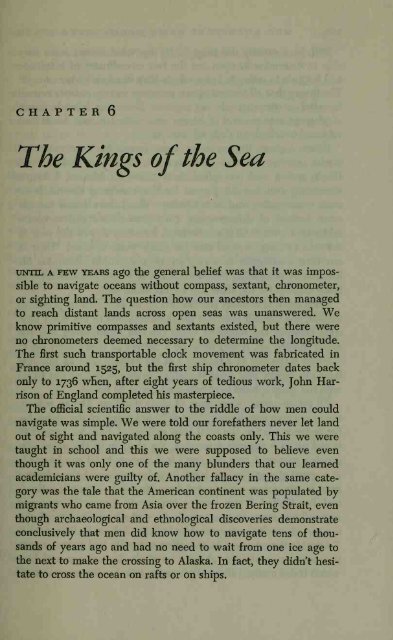Create successful ePaper yourself
Turn your PDF publications into a flip-book with our unique Google optimized e-Paper software.
CHAPTER 6<br />
The Kings of<br />
the Sea<br />
UNTIL A FEW YEARS ago the general belief was that it was impossible<br />
to navigate oceans without compass, sextant, chronometer,<br />
or sighting land. The question how our ancestors then managed<br />
to reach distant lands across open seas was unanswered. We<br />
know primitive compasses and sextants existed, but there were<br />
no chronometers deemed necessary to determine the longitude.<br />
The first such transportable clock movement was fabricated in<br />
France around 1525, but the first ship chronometer dates back<br />
only to 1736 when, after eight years of tedious work, John Harrison<br />
of England completed his masterpiece.<br />
The official scientific answer to the riddle of how men could<br />
navigate was simple. We were told our forefathers never let land<br />
out of sight and navigated along the coasts only. This we were<br />
taught in school and this we were supposed to believe even<br />
though it was only one of the many blunders that our learned<br />
academicians were guilty of. Another fallacy in the same category<br />
was the tale that the American continent was populated by<br />
migrants who came from Asia over the frozen Bering Strait, even<br />
though archaeological and ethnological discoveries<br />
demonstrate<br />
conclusively that men did know how to navigate tens of thousands<br />
of years ago and had no need to wait from one ice age to<br />
the next to make the crossing to Alaska. In fact, they didn t hesitate<br />
to cross the ocean on rafts or on ships.

















